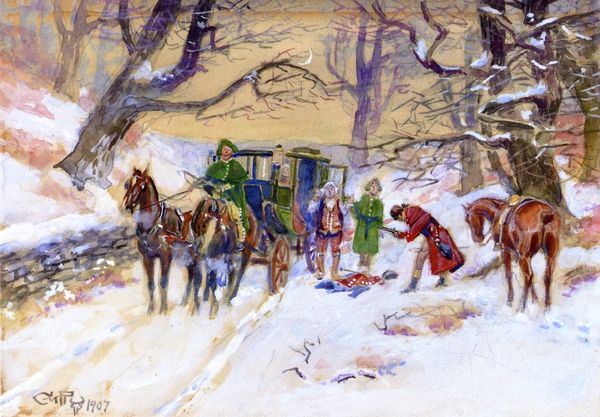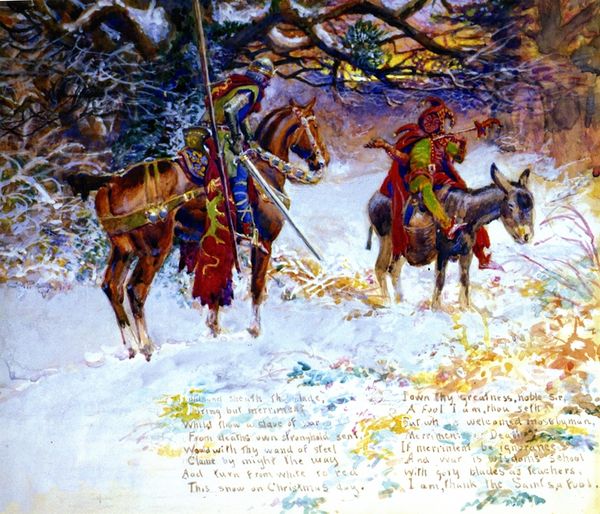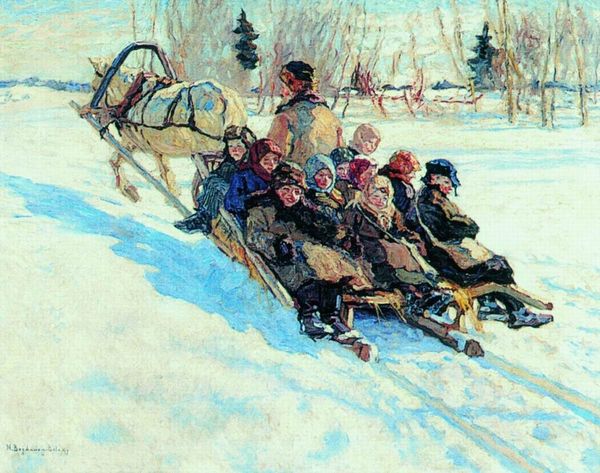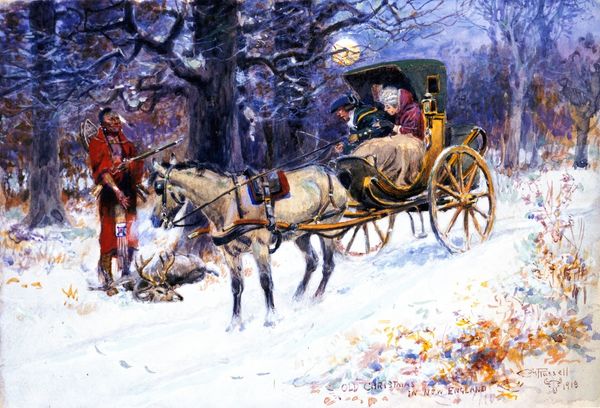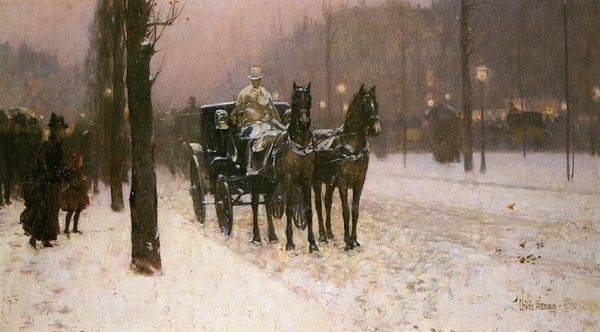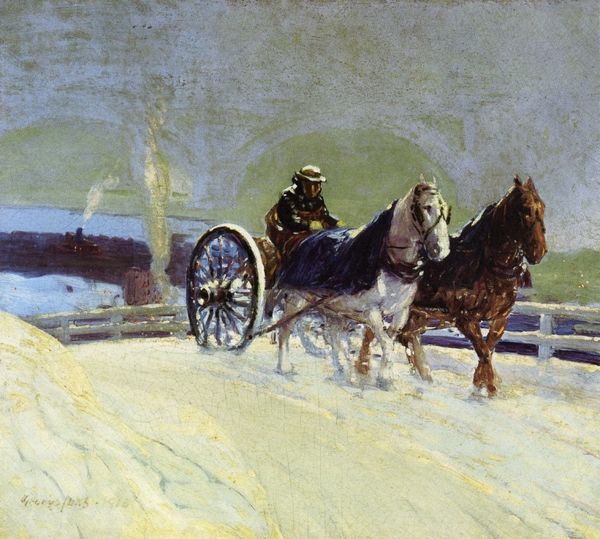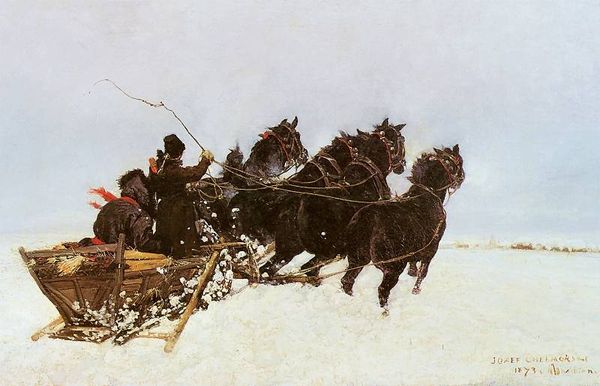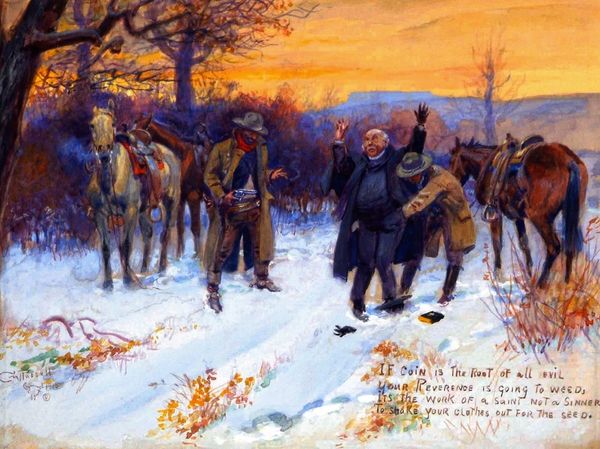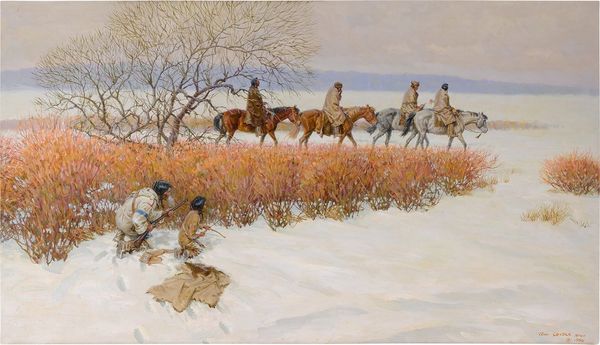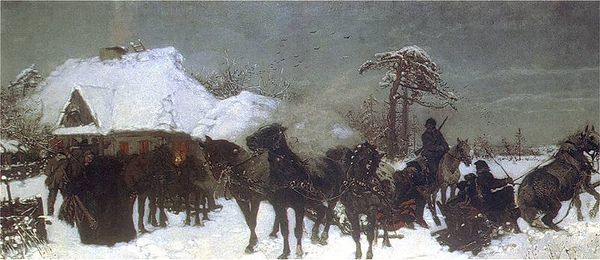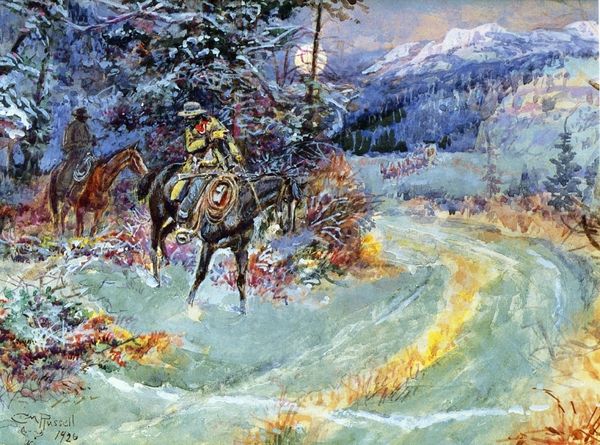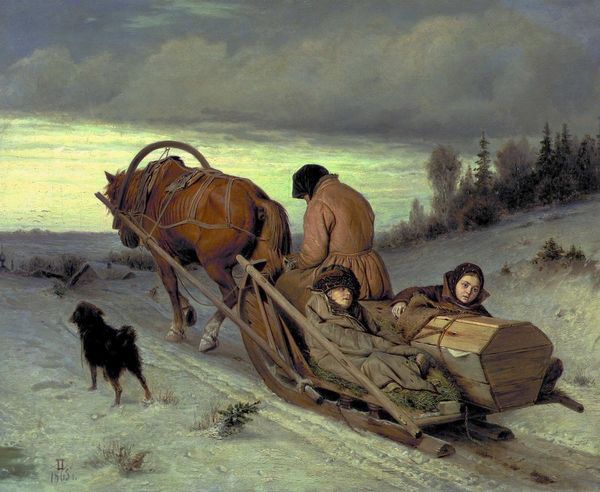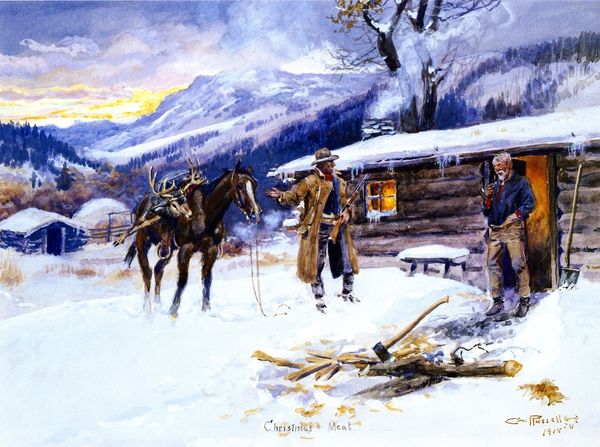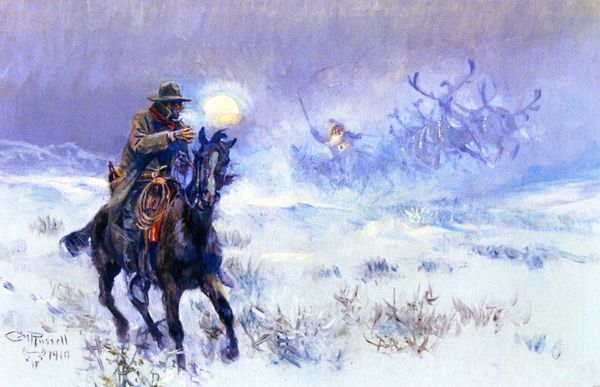
Knitting for the Soldiers, High Bridge Park 1918
0:00
0:00
georgeluks
Terra Museum of American Art, Chicago, IL, US
painting, oil-paint
#
painting
#
oil-paint
#
war
#
landscape
#
impressionist landscape
#
oil painting
#
group-portraits
#
ashcan-school
#
genre-painting
#
modernism
#
realism
Dimensions: 76.7 x 91.8 cm
Copyright: Public domain
Editor: Here we have George Luks’ “Knitting for the Soldiers, High Bridge Park,” created in 1918 using oil paint. What strikes me is the ordinariness of the scene: women knitting, perhaps in support of the war effort, babies in prams. It feels very…domestic. How do you read this painting? Curator: Indeed. Consider the Ashcan School’s project; it often highlighted the everyday life of urban populations. How does this painting participate in defining the role of women on the homefront during World War I and what assumptions does that entail? It portrays women actively contributing, using their traditional skills. What impact does that image of women at work have? Editor: So it’s about redefining their role through seemingly ordinary actions. But why depict it in a park? Wouldn’t a factory be a stronger symbol? Curator: Interesting question. Placing them in a park integrates their war effort into their established social fabric, making the support effort seem commonplace and patriotic and aligning women's labor and national needs with a specific idea of motherhood. What is that motherhood rooted in? Editor: Suburbia. Their engagement seems woven into the landscape, normalized within their role as mothers. By being ordinary it became normalized to the community. Curator: Precisely. How do institutions, through art like this, shape our perception of historical events? Does it challenge or reinforce gender norms during wartime? Editor: I suppose it both challenges and reinforces; women are vital contributors, but still within traditional roles. It's thought-provoking to consider the layers of social context in what appears a simple scene. Curator: Agreed. Analyzing the painting this way can provide an historical view of social attitudes and cultural expectations related to war and gender.
Comments
No comments
Be the first to comment and join the conversation on the ultimate creative platform.
